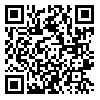Mon, Jun 2, 2025
[Archive]
Volume 3, Issue 4 (12-2023)
APSS 2023, 3(4): 544-553 |
Back to browse issues page
Download citation:
BibTeX | RIS | EndNote | Medlars | ProCite | Reference Manager | RefWorks
Send citation to:



BibTeX | RIS | EndNote | Medlars | ProCite | Reference Manager | RefWorks
Send citation to:
Mohammadi F, Alizadeh M, Akhavan markazi S, Mohammadpour S. Compare the Flexibility of Iranian Adolescents and Young People in Two Selected Groups with Healthy and Spinal Deformity. APSS 2023; 3 (4) :544-553
URL: http://apssjournal.com/article-1-85-en.html
URL: http://apssjournal.com/article-1-85-en.html
1- Department of Sport Medicine, Sport Sciences Research Institute, Tehran, Iran , mohammadi.ssrc@gmail.com
2- Health and Sports Medicine Department, Faculty of Physical Education and Sport Sciences, University of Tehran, Tehran, Iran
3- M.A. in Sports Pathology and Corrective Movements
4- PhD in Sports Pathology and Corrective Movements
2- Health and Sports Medicine Department, Faculty of Physical Education and Sport Sciences, University of Tehran, Tehran, Iran
3- M.A. in Sports Pathology and Corrective Movements
4- PhD in Sports Pathology and Corrective Movements
Abstract: (76 Views)
Muscle weakness and shortness have a profound effect on the length and function of the body, causing abnormal pressure on the joints and other tissues. Deficiency or increase in flexibility is a factor in the stiffness and instability of moving parts and affects the maintenance of the desired condition. Therefore, the aim of this study was to compare the flexibility of Iranian adolescents and young people in two selected groups with healthy and spinal deformity.
The statistical population of this study consisted of adolescents and young people across the country. The statistical sample consisted of 1263 girls and boys (with age range of 18-12 years old) from 5 geographical regions of the country, which could represent the whole country in terms of environment, culture, economy, and genetics and accounted for about 50% of the country's population. The flexible ruler was used to measure the arches of the spine in the sagittal plane, and the flexibility of the back and lumbar muscles, the trunk flexor muscles, and the trunk lateral flexor muscles were measured.
The results showed that there was a significant difference between the flexibility of the two groups of kyphotic and kypholordotic with healthy subjects among the adolescents and young girls, and adolescent boys (P<0.05), but in the two groups, lordotic and healthy, this difference was not significant (P>0.05). The flexibility was significantly different between the gender in both the kyphotic and kypholordotic groups among adolescents (P<0.05), but in the healthy and lordotic groups was not significant (P>0.05). Finally, the results showed that there was only a significant difference between the flexibility of young girls with kyphotics and kypholordotics compared with healthy individuals (P<0.05).
The statistical population of this study consisted of adolescents and young people across the country. The statistical sample consisted of 1263 girls and boys (with age range of 18-12 years old) from 5 geographical regions of the country, which could represent the whole country in terms of environment, culture, economy, and genetics and accounted for about 50% of the country's population. The flexible ruler was used to measure the arches of the spine in the sagittal plane, and the flexibility of the back and lumbar muscles, the trunk flexor muscles, and the trunk lateral flexor muscles were measured.
The results showed that there was a significant difference between the flexibility of the two groups of kyphotic and kypholordotic with healthy subjects among the adolescents and young girls, and adolescent boys (P<0.05), but in the two groups, lordotic and healthy, this difference was not significant (P>0.05). The flexibility was significantly different between the gender in both the kyphotic and kypholordotic groups among adolescents (P<0.05), but in the healthy and lordotic groups was not significant (P>0.05). Finally, the results showed that there was only a significant difference between the flexibility of young girls with kyphotics and kypholordotics compared with healthy individuals (P<0.05).
Type of Study: Original Article |
Subject:
Motor behavior
Received: 2024/06/28 | Accepted: 2024/08/7 | Published: 2024/05/30
Received: 2024/06/28 | Accepted: 2024/08/7 | Published: 2024/05/30
Send email to the article author
| Rights and permissions | |
 |
This work is licensed under a Creative Commons Attribution-NonCommercial 4.0 International License. |




